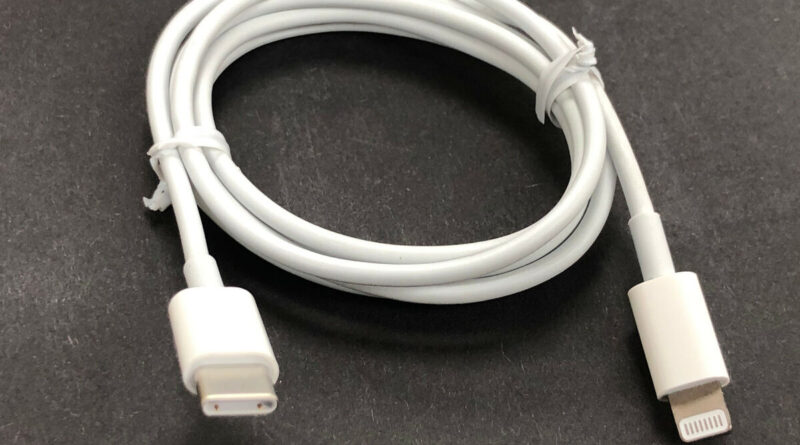Everything You Need to Know About Lightning to USB Cable
Introduction
A Lightning to USB cable is an essential accessory for Apple device users. Whether you need to charge your iPhone, iPad, or AirPods or transfer data between your devices, this cable is an indispensable tool. Over the years, Apple has developed its proprietary Lightning connector, offering faster data transfer and more efficient charging. In this article, we will discuss everything you need to know about Lightning to USB cables, including their types, uses, compatibility, and factors to consider before purchasing one.
What Is a Lightning to USB Cable?
A Lightning to USB cable is a charging and data transfer cable designed by Apple. It features a Lightning connector on one end and a USB connector (USB-A or USB-C) on the other. Unlike traditional connectors, the Lightning connector is reversible, meaning it can be plugged in either way. This unique feature makes it more user-friendly and efficient.
The primary functions of a Lightning to USB cable include:
- Charging Apple devices
- Transferring data between Apple devices and computers
- Syncing with iTunes or Finder on macOS

Types of Lightning to USB Cables
There are different types of Lightning to USB cables available, depending on the USB connector type and performance requirements.
1. Lightning to USB-A Cable
This is the traditional Lightning cable with a USB-A connector on one end. It is commonly used with standard USB ports found on older computers, power banks, and wall adapters. Although it is widely compatible, it does not support fast charging beyond 12W.
2. Lightning to USB-C Cable
A Lightning to USB-C cable is an advanced version that supports faster charging and data transfer. When used with a USB-C power adapter (18W, 20W, 30W, or higher), it enables fast charging for compatible Apple devices. It is also required for connecting iPhones to newer MacBooks and iPads.
3. MFi-Certified Lightning to USB Cable
Apple provides MFi (Made for iPhone) certification to ensure third-party cables meet its quality and safety standards. MFi-certified Lightning to USB cables guarantee safe charging and device compatibility. Non-certified cables can damage your device or result in slow charging.
Benefits of Using a Lightning to USB Cable
Using a high-quality Lightning to USB cable provides several advantages:
1. Fast Charging Capability
A Lightning to USB-C cable paired with a compatible power adapter can charge an iPhone up to 50% in just 30 minutes.
2. Efficient Data Transfer
Apple’s Lightning technology ensures reliable and quick data transfer between your devices and computers.
3. Compact and Durable Design
Lightning cables are sleek, lightweight, and easy to carry, making them convenient for travel and daily use.
4. Wide Compatibility
A Lightning to USB cable can be used with a variety of Apple products, including iPhones, iPads, AirPods, and even some accessories like the Magic Keyboard and Magic Mouse.
How to Choose the Best Lightning to USB Cable
With numerous options available, selecting the right Lightning to USB cable can be overwhelming. Here are some key factors to consider:
1. Cable Length
Lightning cables come in different lengths, usually ranging from 0.5 meters to 2 meters. Choose a length that suits your needs:
- Short cables (0.5m – 1m): Ideal for travel or power banks.
- Medium cables (1m – 1.5m): Best for everyday use.
- Long cables (2m and above): Suitable for use when charging from a distance.
2. MFi Certification
Always opt for an MFi-certified Lightning to USB cable to ensure compatibility and safety. Non-certified cables may result in errors such as “This accessory may not be supported.”
3. Durability
Look for cables with reinforced connectors and braided designs for extra durability. Nylon-braided cables tend to last longer and resist fraying.
4. Fast Charging Support
If you need fast charging, choose a Lightning to USB-C cable and pair it with a USB-C power adapter of at least 18W.
Common Issues with Lightning to USB Cables and How to Fix Them
Despite their reliability, Lightning to USB cables can sometimes encounter issues. Here are some common problems and solutions:
1. Slow Charging or No Charging
- Ensure the cable is MFi-certified.
- Clean the Lightning port on your device.
- Use a compatible power adapter.
2. Cable Not Recognized by Device
- Restart your device and reconnect the cable.
- Try using a different USB port or power adapter.
- Check for software updates on your device.
3. Cable Fraying or Breaking
- Use a cable with reinforced ends or a braided exterior.
- Avoid excessive bending or pulling of the cable.

Recommended Lightning to USB Cables
Here are some of the best Lightning to USB cables available:
| Brand | Model | Type | Features |
|---|---|---|---|
| Apple | Original Lightning to USB Cable | USB-A | Standard charging & data transfer |
| Apple | Lightning to USB-C Cable | USB-C | Fast charging up to 20W |
| Anker | PowerLine+ II | USB-A | Durable, MFi-certified, reinforced design |
| Belkin | Boost Charge Cable | USB-C | Braided, fast charging support |
| AmazonBasics | Lightning Cable | USB-A | Affordable, MFi-certified |
Conclusion
A Lightning to USB cable is a vital accessory for Apple users, ensuring seamless charging and data transfer. Whether you need a standard USB-A to Lightning cable or a fast-charging USB-C to Lightning cable, choosing a high-quality, MFi-certified product is essential for safety and performance. By considering factors such as length, durability, and fast-charging capabilities, you can find the perfect cable to meet your needs.
Investing in a reliable Lightning to USB cable ensures that your Apple devices remain charged and connected at all times. Always opt for trusted brands and certified products to avoid potential damage or compatibility issues.
you may also like
